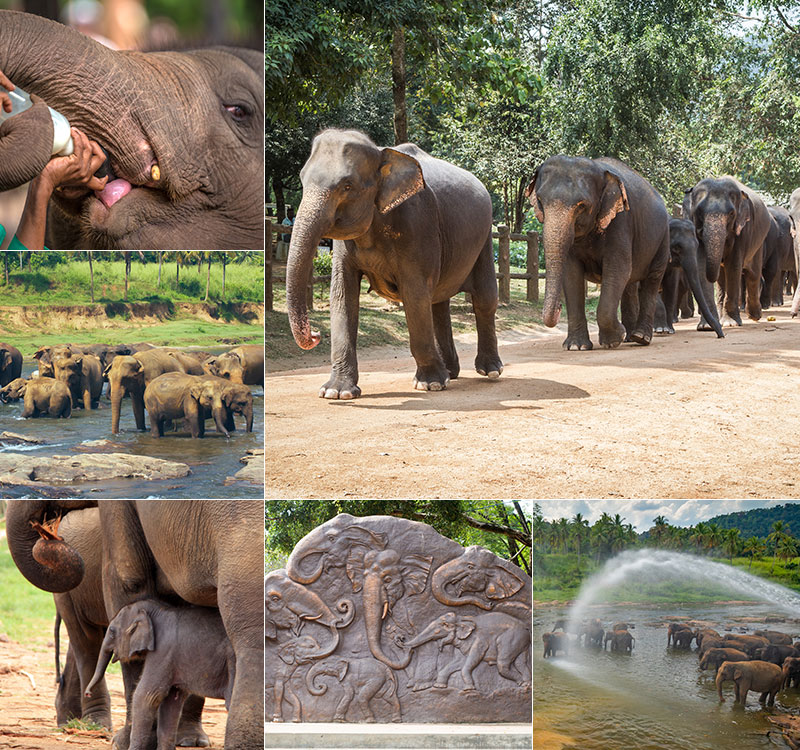Visiting Sri Lanka’s Elephant Orphanage

Welcome to our guide on visiting Sri Lanka’s Elephant Orphanage. In this article, we will discuss the unique and captivating experience of visiting this incredible sanctuary for orphaned elephants. We will cover the history of the orphanage, what you can expect to see and do during your visit, and provide tips for making the most out of your trip. Let’s dive in!
Table of Contents
ToggleWhat is the history of the Elephant Orphanage in Sri Lanka?
The Elephant Orphanage in Sri Lanka, also known as the Pinnawala Elephant Orphanage, was established in 1975 by the Sri Lanka Department of Wildlife Conservation. The orphanage was created to care for abandoned and orphaned elephants found in the wild. It has since become a popular tourist attraction and an important conservation and research center for the protection and preservation of Sri Lanka’s elephant population.
Visitors to the orphanage have the opportunity to observe and learn about the incredible animals up close, while also supporting the conservation efforts of the sanctuary. The orphanage has played a significant role in raising awareness about the challenges faced by Sri Lanka’s elephant population and has been instrumental in implementing conservation initiatives.
What can visitors expect to see and do at the Elephant Orphanage?
When visiting the Elephant Orphanage, visitors can expect to witness the daily routines of the orphaned elephants, including their feeding and bathing rituals. The sanctuary is home to a large herd of elephants, and visitors can observe these magnificent creatures as they roam freely within the grounds of the orphanage.
In addition to observing the elephants, visitors can also take part in a range of activities such as bottle-feeding the baby elephants, participating in educational programs about elephant conservation, and even taking elephant rides through the surrounding area. The orphanage offers a unique and enriching experience for visitors of all ages.
How can visitors make the most out of their trip to the Elephant Orphanage?
To make the most out of your trip to the Elephant Orphanage, it is recommended to arrive early in the morning to witness the elephants’ bathing ritual. This is a unique and captivating experience that should not be missed. Additionally, be sure to take advantage of the opportunities to interact with the elephants, such as bottle-feeding the baby elephants and learning about their individual stories and backgrounds.
Visitors should also be mindful of the orphanage’s rules and regulations regarding interactions with the elephants, as the well-being and safety of the animals are of utmost importance. Finally, consider bringing a camera to capture the unforgettable moments and memories of your visit to the sanctuary.
What are the best times of year to visit the Elephant Orphanage?
The Elephant Orphanage in Sri Lanka is open year-round, but the best times to visit are during the dry seasons, which occur from May to September and from December to February. During these periods, the weather is more favorable for outdoor activities, and the elephants are more active and visible to visitors. Additionally, the orphanage often hosts special events and programs during these peak seasons, providing visitors with even more opportunities to engage with the elephants and learn about their conservation efforts.
Is there an entrance fee for visiting the Elephant Orphanage?
Yes, there is an entrance fee for visiting the Elephant Orphanage, which helps to support the ongoing conservation and care of the elephants. The fee varies for international and domestic visitors and is typically affordable for tourists. It is important to note that the proceeds from the entrance fees are used to fund the operations of the orphanage and contribute to the conservation efforts for Sri Lanka’s elephant population.
Conclusion
Visiting Sri Lanka’s Elephant Orphanage is a truly unforgettable experience that offers visitors the chance to witness the incredible work being done to protect and preserve the country’s elephant population. From learning about the orphanage’s history and daily routines to engaging with the elephants and supporting their care, a trip to the sanctuary is both educational and inspiring. Whether you are a wildlife enthusiast, nature lover, or simply seeking a unique travel experience, the Elephant Orphanage is a must-visit destination in Sri Lanka.
FAQs
Are there opportunities to interact with the elephants at the orphanage?
Yes, visitors have the chance to bottle-feed the baby elephants and observe the elephants’ daily routines, including their bathing rituals.
Can visitors take photos during their visit to the orphanage?
Yes, visitors are encouraged to capture their experiences by taking photos of the elephants and the beautiful surroundings. However, it is important to be respectful and mindful of the animals’ well-being when doing so.
Are there food and refreshments available at the orphanage?
Yes, the orphanage has a restaurant and snack bar where visitors can purchase food and beverages. It is recommended to plan for meals and snacks during your visit, as the grounds of the sanctuary are quite expansive.
What are the transportation options for getting to the Elephant Orphanage?
Visitors can arrange for transportation to the orphanage through local tour operators, or utilize public transportation options such as buses and trains to reach the sanctuary. Many hotels and accommodations in the area also offer shuttle services to the orphanage.
How long should visitors plan to spend at the Elephant Orphanage?
Visitors typically spend around 2-3 hours at the orphanage, allowing ample time to observe the elephants, participate in activities, and explore the surrounding area. The length of the visit may vary based on individual interests and preferences.
All Categories
Recent Posts
Flying from KTM to Sri Lanka: What You Need to Know
Affordable Business Class Flights to Sri Lanka

